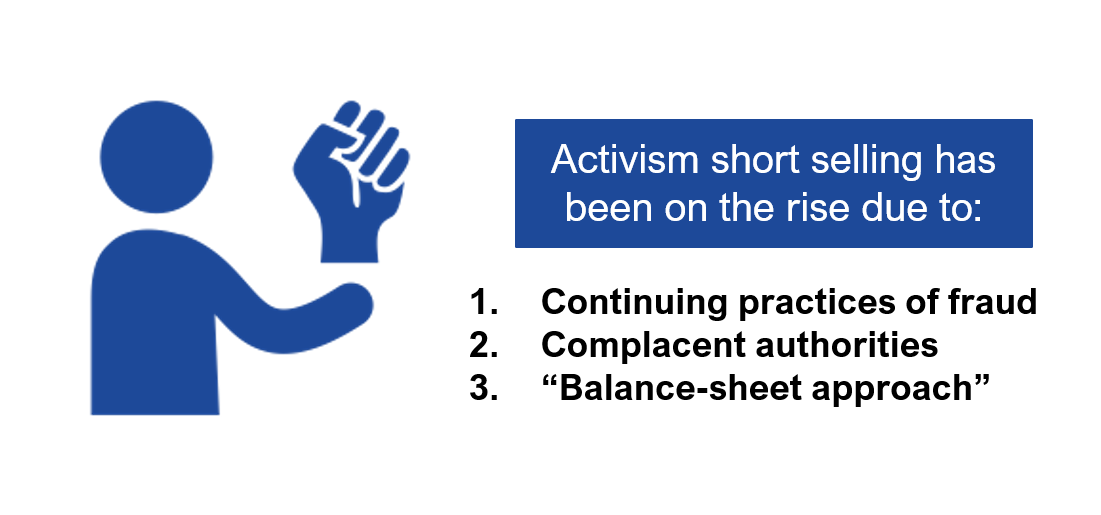
The short, what is it? Both short and long positions are common and popular investing strategies known by nearly everyone in the world of trading. Being the opposites of each other, they both have their time and place, but the longs seem to be more common. The shorts don’t get enough attention since they’re a bit more difficult to grasp, despite being relatively simple, and require more steps.
- What are Shorts?
- How Shorts Work?
- When Are Shorts Worth It?
- Pros and Cons of the Shorts
- Some Examples
- An Example of a Short Sale
- An Example of a Successful Profitable Short Sale
- An Example of a Short Sale with a Loss
- An Example of Using Shorts for Hedging
- A Real-Life Example of a Short Sale
- The Risks of Short Sales
- Unlimited Loss
- Short Squeeze
- Small Potential Profit
- Market Going Up
- Additional Spending on Short Selling
- Margin Interest
- Borrowing Stocks
- Dividends and Other Payments
- The Parameters of Shorts
- The Steps Required for a Short Sale
- How to Start: The Tips for Market Analysis
- The Tips for Entering a Short Sale
- The Ethics of the Short Selling
- Are Short Sales a Good Strategy or Not?
- Frequently Asked Questions (FAQ)

The article below will focus its attention only on the shorts. It will explain the main terms, provide successful and less successful examples, answer more common questions, and take a look at possible risks. Let’s start.
What are Shorts?
Shorts, or short sales, are a tactic that involves selling an asset in the hopes that its price will go down, allowing the trader to buy it back at a lower cost. In this case, the trader doesn’t own an asset and usually borrows it, making additional payments along the way. The picture 1 below shows the definition of a short position.
How Shorts Work?
The process usually works as follows:
- The investor borrows shares or any other asset from a broker or another investor.
- The investor immediately sells the borrowed asset on the open market.
- If the price falls, the investor can buy it back at a lower cost and return it to the original owner.
- The investor keeps the difference between the sale price and the purchase price as profit.
When Are Shorts Worth It?
The shorts work best when a trader is convinced that the asset will decline in price. Such a downward movement will pay off if everything is done correctly. The traders usually do so by analyzing the asset’s price and market trends.

If the former seems undervalued and/or the latter seems to be heading down, then such a strategy will probably end with a profitable result. Another use case is for hedging purposes; we will provide some examples of it later.
Pros and Cons of the Shorts
As is the case with any investment tactic, short sales come with their own advantages and disadvantages. While some of the pros might be relatively obvious and the cons will be described in the “Risks of Short Sales” section, adding a table that shows the strong and weak points of the tactic is a great way to demonstrate them in a straightforward manner.
| Pros | Cons |
| The possibility of profiting from a declining market | The possibility of unlimited losses |
| One can use them for hedging | The short squeeze phenomena |
| It’s a great way to diversify the funds | In a stock market, a trader doesn’t own their funds, borrowing them instead, so this tactic doesn’t offer the benefits of keeping shares, like the ones that going long would provide |
Some Examples
In the next few sections, we will provide demonstrative examples that will cover exactly how shorts work. They will include the way the shorts usually end, successful and unsuccessful sales, the use case for hedging, and a real-life example.
An Example of a Short Sale
A trader takes a look at the market and expects the shares of a company to decline. The reasons are simple: its fundamental financials are quite weak, and everything points out that the company is overvalued. The quarterly report is coming soon, and the trader thinks that it will be unsatisfying, so they decide to borrow shares from a lender and buy them back at a lower price. This is how they short the asset. The next two sections will show how things may unfold.
An Example of a Successful Profitable Short Sale
A trader sells the shares at $100 each. There are 100, so they spent $10000. If everything goes as planned, the quarterly report is disappointing and results in the price declining to $90 per share. The trader buys them back at this cost, spending only $9,000. They get to keep the change of $1000, minus the fees and other payments. The trade was successful, and the tactic worked!
An Example of a Short Sale with a Loss
Now, there’s another possible outcome. The quarterly report shows hopeful results, and the price goes up. The trader decides to wait for a price to go down, but that doesn’t happen. They have to pay the fees to the broker for each day of holding fees, and it adds up over time. At the end, the trader decides to buy the shares at $110 each. This results in a loss of $1,000 (110 x 100 minus 10,000 = $1000). And the trader also had to pay the fees.
An Example of Using Shorts for Hedging
Shorts can be used to mitigate the risks. This is usually done by having both short and long positions in one’s portfolio. Let’s check out an example. An investor holds a portfolio of stocks that they believe will perform well in the long term, but they are concerned about a short-term market downturn. To hedge against potential losses, the investor decides to take a short position on a stock index ETF.

If the market does experience a downturn, the ETF will decrease in value, and the investor will profit from their short position, offsetting some of the losses in their portfolio. However, if the market performs well, the investor’s portfolio will still benefit, and any losses from the short position will be minimized by their gains in the long position.
A Real-Life Example of a Short Sale
One of the most famous examples is Charlie Ledley. There was even a book called “The Big Short” that chronicled his success. The book was later adapted into a well-received movie with the same name.
Ledley’s short selling strategy involved identifying overvalued companies or industries and taking a position that would profit if their stock prices declined. He would borrow shares from a broker, sell them in the market, and then buy them back at a lower price to return them to the broker, pocketing the difference as profit.
The Risks of Short Sales
Obviously, there are some certain risks involved. To be able to successfully mitigate them, the trader has to know what they are and be aware of them during the market analysis process.
Unlimited Loss
If a trader predicted the market move incorrectly and the price starts going upwards, technically it can rise indefinitely, thus resulting in unlimited losses. Yes, it can go much beyond losing original investment.
Short Squeeze
A relatively rare phenomenon that can still happen, a short squeeze happens when a significant and sharp rise of the price forces many traders to close their positions. since their predictions turned out to be incorrect.

The effect basically “squeezes” the sellers out of the market. You can check picture 3 to have a better understanding of the process.
Small Potential Profit
Short selling has limited profit potential, as the stock price can only fall to zero, while the potential losses are endless, as this article has already mentioned.
Market Going Up
If the price continues to go up for an extended period of time, this can create issues for the traders that didn’t time their sell correctly. An unlimited loss and short squeeze were already mentioned in previous paragraphs and they’re usually direct results of a so-called bull market.
Additional Spending on Short Selling
Short selling usually involves paying additional money. The main reason for that is the fact that a trader doesn’t own the stock they use; they borrow it instead, which already has some costs. There are also additional fees and margin interest.
Margin Interest
When an investor takes a short position, they are essentially borrowing shares from a broker to sell in the market with the hope of buying them back at a lower price to return to the broker.

However, since the investor does not actually own the shares they are selling, they must put up collateral in the form of a margin to ensure that any potential losses will be covered.
Borrowing Stocks
Brokers also usually ask for fees on a daily basis until the trader returns the stock. The sum usually isn’t large, but it can easily add up over time. This is a perfectly normal practice, and it usually forces the sellers to buy the stock back earlier than they ideally would.
Dividends and Other Payments
Short sellers don’t receive dividends. Moreover, the value of any dividend must be deducted from their accounts and transferred to the stock owner when needed.
The Parameters of Shorts
Let’s take a look at the main parameters of shorts. One has to understand that some of them, such as price, can be affected by other things, like the volatility of the market.
- Price of an asset;
- Quantity of an asset (for example, a number of shares, if one decides to short stocks);
- Margin and its interest rate.
The Steps Required for a Short Sale
This article already mentioned that shorting usually requires more steps than going long. So, what are they? The list below will answer such a question:
- Identify an asset to be shorted. It can be a stock, bond, cryptocurrency, or something else.
- Find a platform for trading. First things first, the exchange should offer such a stock. Moreover, it should have a good reputation and other parameters.
- Borrow shares. During this step, in the case of a stock market, a trader borrows the shares from a broker or another investor.
- Selling the shares. The main step of the process involves selling the stock or other asset on an open market.
- Monitor the prices. At this stage an investor monitors the market closely and waits for the decline.
- Buying back. Once the price goes down, an investor buys back an asset and returns it to a lender.
- Profit. At this stage, an investor gets to keep the change between the price at which they sold an asset and bought it back. Of course, there will be fees and margin interest.
How to Start: The Tips for Market Analysis
There are various things to consider for market analysis before trying a short sale. Here they are:
- Analyze the company’s financials: take a look at the company’s financial statements to assess its profitability, cash flow, and debt levels. An overvalued company and the ones with weak parameters may be more vulnerable to a decline in its stock price.
- Monitor industry trends: keep an eye on industry trends and news that could impact the company’s performance. This can help you identify potential risks and opportunities for short selling.

- Technical analysis: use data to analyze the stock’s price movements and identify potential entry and exit points for your short position. There are plenty of tools to help you.
- Evaluate market sentiment: monitor market and investor sentiment towards the company or industry. Negative sentiment can be a sign of potential weakness in the stock price.
The Tips for Entering a Short Sale
The previous section already provided information about the things to consider before going short, and now it’s time to take a look at more direct recommendations.
- Have a clear exit strategy. Before entering a short sale, one has to make sure that there’s a clear plan for when they will exit the trade. This can help to manage risk and avoid potential losses.
- Use stop-loss orders. A trader should consider using stop-loss orders (in the case of shorts, it’s rather a buy-stop one) to limit potential losses in case the stock price moves against one’s short position.
- Be aware of potential catalysts. Stay informed about potential catalysts that could impact the stock price, such as earnings reports, regulatory changes, or industry developments to know whether you have to take a short position.
- Monitor the position closely. Keep a close eye on your short position and adjust your strategy as needed based on new information or changes in market conditions.
The Ethics of the Short Selling
Some people might argue that selling an asset and hoping for its price to go down is inherently a bad and unethical idea, while plenty of others think that it can provide more liquidity to the market. Moreover, short selling as a practice helps in identifying overvalued companies, which can be quite great for the overall market. Some also use short sales as a tool for their activism. See picture 4.

All in all, the tactic is perfectly legal and rarely looked down upon. There’s nothing shady about it, and the arguments against short selling usually include the risks for the traders themselves rather than considering it an inherently bad practice altogether.
Are Short Sales a Good Strategy or Not?
As is always the case, this depends on the situation. If a market seems to be heading down but the trend doesn’t seem to be permanent, shorting can provide impressive results. One can also use it for hedging and minimize the risks this way.
Frequently Asked Questions (FAQ)
- Why are they called shorts?
The reason why short positions are called this way is probably because everything doesn’t take much time, since keeping borrowed stock for a long time will result in large fees.
- Why do short sellers have to borrow the stock?
Because owning the stock comes with its own set of advantages and disadvantages, making it unlikely for such a strategy.

- Is selling short bad?
No, it’s a legal practice, and while some look down upon it, the majority of experts agree that it’s often beneficial for the market.
- Can I sell on my brokerage account?
Yes, you can use your brokerage for short sales.
- What is a short squeeze?
A short squeeze is a situation that occurs when investors who have bet against a stock (by short selling) are forced to buy shares to cover their losses as the stock price rises. This can drive the prices even higher.











